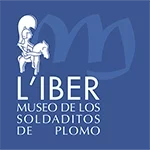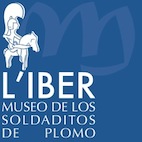
The events that are recreated in this diorama are the result of the exhaustive study of Alejandro Noguera, current director of L’Iber, Museum of Toy Soldiers. Thanks to his doctoral thesis “The Macedonian Falange from its origins to the first successors of Alexander the Great”, Alejandro Noguera developed this magnificent model, with more than two meters long and 4,000 25 mm figures.
This model represents the historical events that happened on October 1, 331 BC. in Gaugamela, near what is now the city of Mosul in Iraq. In this battle the Persian armies under the command of their king Darius III and the Macedonian army, under the command of Alexander the Great, faced each other. Modern historians have estimated that the Persian army was made up of some 250,000 fighters. As for Alexander’s army, it numbered 7,000 horsemen and 40,000 infantries.
One of the main differences between both armies and the reason why victory was chosen in favor of the Macedonians was the fact of the unit, most of the soldiers were professional soldiers, and even more important, they knew the king they represented, they spoke with him, they ate with him, unlike the case of the Persians, many soldiers did not know their ruler, or even spoke the same language, a reason that made communication between their soldiers very difficult and many of them had not taken up a weapon in their life, since they were peasants. This battle marked the end of the Persian empire and is considered a masterpiece in military tactics and the greatest victory for Alexander the Great.
If you look at the model, you can see how Alexander’s cavalry goes diagonally towards the central front where Darío is. A devastating load that will cause the Persian center to sink and lose the best troops of its army.
Darío, faced with the possibility of defeat, decided to flee, “Live to fight another day.” He undertook the withdrawal and with it, the morale of his troops collapsed, which, disorganized, began to flee in all directions. The victory at Gaugamela meant for Alexander the Great the control of Mesopotamia and practically the defeat of the Persian Empire, opening the eastern world to Hellenization.

